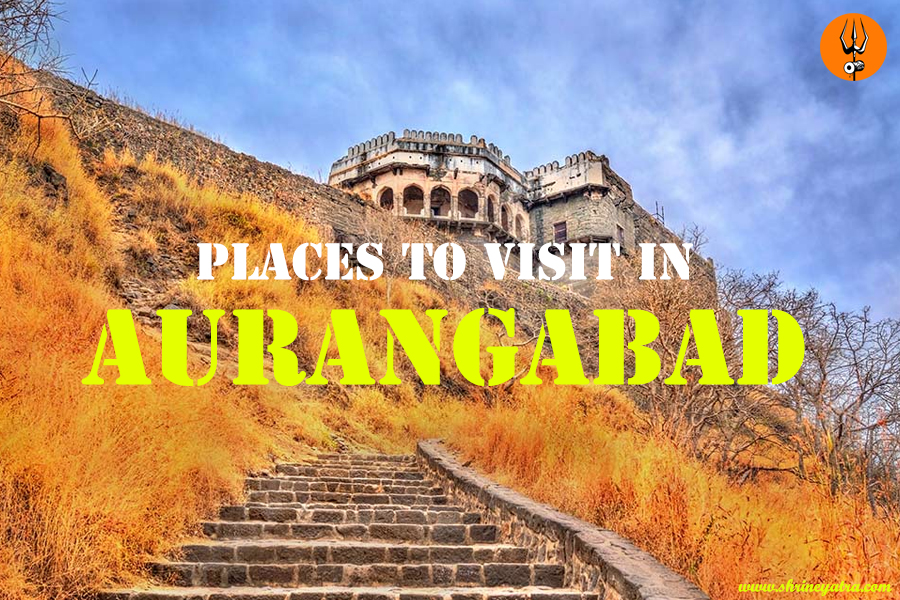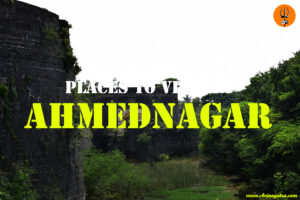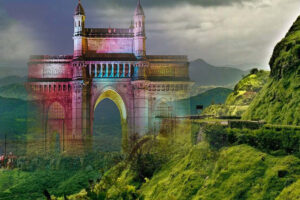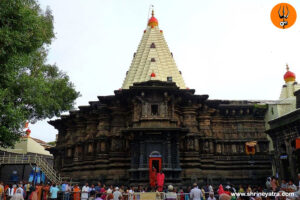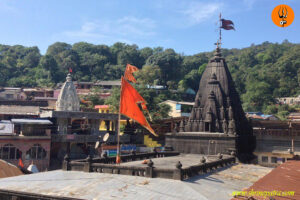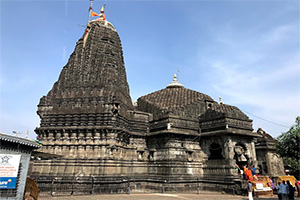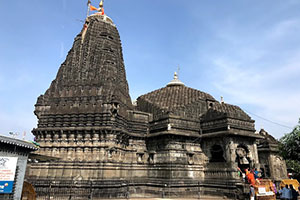The city of Aurangabad (Tourism Capital of Maharashtra), honoring the Mughal emperor Aurangzeb, is home to numerous ancient and historic landmarks. The city of Aurangabad, called “the City of Gates”, presents several sights which reflect upon its glorious history. Aurangabad boasts of majestic caves to grand forts. The following is a complete travel guide of Aurangabad that takes you through the best of the cities in it.
In this article, we will take you on a journey through the famous places to visit in Aurangabad, giving you a glimpse into the spiritual and historical wonders that await you.
- Best Time to Visit: November - March
- Ideal Vacation Duration: 3 to 5 days
- Places to Visit:Ajanta Caves, Bibi Ka Maqbara, Ellora Caves, Grishneshwar Temple, Daulatabad Fort, etc.
- Things to Do: Explore the historical heritage and visit temples and museums.
- How to Reach: Via air, rail and road.
If you’re looking for peace and spirituality, you can visit all the places in Aurangabad through our great Maharashtra Tour Packages deal!
Here are top popular places to visit in Aurangabad:
- Ajanta Caves: The Epitome of Ancient Architecture
- Bibi Ka Maqbara: A Symbol of Love
- Ellora Caves: A Journey into the Past
- Grishneshwar Temple: A Pilgrimage for Hindus
- Daulatabad Fort: A Mighty Citadel
- Jayakwadi Dam: Largest Earthen Dam
- Siddharth Garden and Zoo: Fun for the Whole Family
- Chhatrapati Shivaji Museum: Unveiling History
- Salim Ali Lake: A Serene Retreat
- Pitalkhora Caves: A Glimpse into the Past
- Siddharth Garden and Zoo: A Fun-filled Day for the Whole Family
- Gul Mandi: Largest Aurangabad Baazar
- Jain Caves
- Buddisht Cave
- Khuldabad
- Kailashnatha Temple
- Bhadra Maruti
- Killa Arak
- Pir Ismail Dargah
- Parli Vaidyanath
- Sunehri Mahal
If you are planning to visit Aurangabad? Here, we have compiled a list of top 21 places to visit in Aurangabad & things to do in Aurangabad that should be on your wishlist!
1.) Ajanta Caves: The Epitome of Ancient Architecture
The Ajanta Caves rank the first among the best tourist sites in Aurangabad. These are Buddhist caves, cut in mountains, and dating form 2 century AD; they are a remarkable archaeological example. The Ajanta Caves, declared a UNESCO World Heritage Site, is an ideal example of the ancient Indian artistry.
Buddhist monks used the caves segmented into different sections as study, living and worship areas. Through these intricate murals, paintings, and carvings on the walls we gain valuable knowledge about the lifestyle and cultural practices of that time. Art Lovers and History Enthusiasts should visit the Ajanta Caves.
2.) Bibi Ka Maqbara: A Symbol of Love
This monument is called the ‘Taj Mahal of the Deccan’ and was built by the Mughal emperor Aurangzeb in honour of his beloved wife DilrasBanu Begum. Although it is not as majestic as the Taj Mahal, this mausoleum is still another excellent example of Mughal architecture.
The mausoleum occupies the center of an elevated rectangular platform with four minarets guarding it. Access to the platform is through a set of stair-steps which lead to the entrance below. The monument is covered in gorgeous marble with delicate patterns which symbolize the eternal love of Aurangzeb and his wife. Visiting Bibi ka Maqbara gives one an opportunity to appreciate the excellent architecture and eternal love.
3.) Ellora Caves: A Journey into the Past
In the vicinity of Aurangabad another architectural gem is the Ellora Caves. In India, the rich cultural heritage is represented by the UNESCO World Heritage site of these caves, built by Rashtrakutas & Yadavas, Jains.
The Ellora Caves are an exceptional example of ancient Indian culture’s refinement and splendor. Each cave narrates its own story with intricate carvings and fine details of the sculpture. The well-known caves are Vishwakarma, Dashavatara, Kailsanatha Temple, Rameshvara, and Indrasabha. Visiting the Ellora Caves transports one to a different era in the history of India.
4.) Grishneshwar Temple: A Pilgrimage for Hindus
The Grishneshwar Temple is an esteemed pilgrimage site for Hindus situated 30km away from the charming village of Aurangabad. This temple is the last of the 12 Jyotirlingas and is dedicated to Lord Shiva.
The temple was constructed using pre-historical architectural styles with red bricks and exquisite carving. It is said to help purifying the heart and souls of its believers. The temple is further sanctified by the holy water springing from within it. A visit to the temple offers a spiritual experience that connects you with the divine.
5.) Daulatabad Fort: A Mighty Citadel
The Daulatabad Fort, located approximately 11 km northwest of Aurangabad, is a remnant of glory and power that is no more. This fort is famous for its impregnable defense and is located at the top of a conical hill that offers a sweeping view of the surroundings.
The structure of the Daulatabad Fort is splendid; it comprises of three layers of walls and moats along with subterranean passages constructed with solid rocks. In the fort there are some renowned buildings like the Chand Minar, Chini Mahal, and Baradari. Take a trip to the Daulatabad Fort and be amazed at the brilliance of engineering from those times.
6.) Jayakwadi Dam: Largest Earthen Dam
One cannot fail to list Jayakwadi Dam, another popular tourist destination in Aurangabad. It is widely popularly recognized among the largest irrigation dams that exist in Maharashtra and as one of the largest earthen dams in Asia.
While in Jayakwadi take some time to visit the adjacent Jayakwadi Bird sanctuary which is made up of some thirty small islands created by the Nath Sagar that offers one of the major tour sites near Aurangabad.
The refuge provides perfect conditions for numerous birds’ temporary staying and resting. It has shallow water, favorable conditions, and abundance of food. In essence, it is home over 200 rare and exotic bird species like cranes, flamingos, pigeons, brahminy, and several others.
7.) Siddharth Garden and Zoo: Fun for the Whole Family
No place is as perfect for a family to spend a day than Siddharth Garden and Zoo. The landscaped garden has a peaceful environment comprising of verdant vegetation, bright flowers, and lovely spring. Among children’s favorites is the zoo within the garden with its collection of animals.
The garden is an ideal place for leisure and picnicking, while the zoo offers one the chance to see rare animals. To all nature lovers and families out to have fun, a stopover at Siddharth Garden and Zoo.
8.) Chhatrapati Shivaji Museum: Unveiling History
The Chhatrapati Shivaji Museum dedicated is an array of historical artifacts in honor of the legendary Maratha warrior, Chhatrapati Shivaji. The museum has six exhibition halls, which exhibit significant events in Shivaji’s life and achievements.
The museum contains several war weapons, including ancient rifles, swords, shields, and other weapons which Shivaji used in conquering the Mughals. The forts built by Shivaji during his lifetime are also portrayed in this picture. Chhatrapati Shivaji is a museum which would take you back to the days of glory when Marathas reigned.
9.) Salim Ali Lake: A Serene Retreat
If you would rather be in a peaceful environment with natural beauty than at crowded bazaars or tourist attractions, then Salim Ali Lake is ideal for you. Large body of water surrounded with green vegetation gives the person relaxed environment where you have a chance to listen to soft sounds of nature.
The lake boasts a variety of both local and migratory birds that attract bird enthusiasts. Birdwatching here is fantastic, with a bird sanctuary surrounding the lake. If a nature lover wants to watch the beauty of the lake or experience it on a boat, a visit to Salim Ali Lake is mandatory.
10.) Pitalkhora Caves: A Glimpse into the Past
These include the Pitalkhora Caves, which have their origin in the 3rd century BCE and stand as a wonderful example of rock-cut architecture in India. The Western Ghats have 14 ancient Budhist caves which are surrounded by a gushing waterfall, thus increasing their natural beauty.
The caves are divided into two types: chaityas and viharas. The motifs, structures, paintings and sculptures of antiquity are depicted by them all. The Pitalkhora are a series of 15 rock-cut caves managed by the Archaeological Survey of India and shed light on India’s fascinating past.
11.) Siddharth Garden and Zoo: A Fun-filled Day for the Whole Family
Families looking for an exciting day out will find that Siddharth Garden and Zoo is the ideal place. The garden is an idyllic landscape featuring attractive greenery, lovely flowers and peaceful water features. However, there are animals in a zoo within the garden that would be most enjoyed by the kids.
The garden is well-suited for picnics and resting while the zoo enables one to have a direct view of the animals. Nature lovers and those looking for quality time with their family should visit Siddharth Garden and Zoo.
12.) Gul Mandi: Largest Aurangabad Baazar
There are special bazaars in every place, and there also is Aurangabad. The famous and the known include Gul Mandi which is the largest bazaar in Aurangabad. Here trading is carried out in the famous himroo shawls and saree. Himroo is renowned for its cloth, the most important of which are those that come from Ajanta and Ellora caves, with intricate designs inspired by peacock, flower, etc.
13.) Jain Caves
Cave 34 is an uncompleted four pillared hall with a shrine. There is another known place referred to as Samvatsarana at Ellora caves where thirthankaras did their preaching after achieving omniscience.
Cave 34 consists of a four-pillared uncompleted hall and a shrine. Another place called Samvatsarana is in Ellorcave where thirthanakaes taught after attaining knowledge of everything.
14.) Buddisht Cave
Most of the 12 Buddhist Caves are viharas or monasteries. There are several monastery shrines in the caves that feature statues and paintings of Buddhas, Bodhisattvas and saints.
Of all, Cave 10 also called the “Carpenter’s Cave” is the most popular Buddhist cave. In this cave there are cathedral-like chaityas halls. There is a statue of Buddha whose height is fifteen feet and it is located in the middle of this cave. This consists of a pillared verandah (gallery) having two shrines and one single cell.
15.) Khuldabad
The town is small, situated at around 13 km southwest from Aurangabad, just 3 km away from the Ajanta and Ellora Caves of the World Heritage Site. The city was inhabited by several Sufi saints in the fourteenth century and is popularly known by the name ‘Rauzaa’ meaning the garden of paradise. Important monuments like Aurangzeb’s Tomb, Dargah of Zar Zari Zar Baksh, Shaikh Burhan ud-din Gharib Chisti and Shaikh Zain-ud-din Shirazi are housed in this holy city. The Bhadra Maruti Temple devoted to Lord Hanuman is another notable religious site found at Khuldabad.
There is another place, a valley of saints, located near Khuldabad, where it is said that there are graves of 1500 Sufi saints. The capture of Jahanabad by the son of Jahangir the Mughal Emperor Aurangazib in the early seventeenth century led to the construction of a seven gate wall around the city.The gates were Nagarkhana, Pangra, the Langda Gate, Mang Here, you can see the ruins of the Mughal monument. Being a religiously and historically significant city, the city of Khuldabad stands out.
16.) Kailashnatha Temple
The largest single cave in the world Kailasha or Kailashanatha temple can be found in cave 16 of Ellora Caves in Aurangabad, Maharashtra. This is an exceptionally great temple in India carved out of single basalt rock from Charanandri hills and is incredible in size, architecture, and carvings. The Kailasa temple presents an enigma not only for archeologists but also for enthusiasts in the field of history and architecture.
Krishna I built the temple in the 8th century as a shrine to Lord Shiva, a Hindu deity. Every visitor is struck by its beauty and the legends that are associated with the temple as it is made of one single stone, carved to perfection in the traditional way. It was constructed within 18 years and 2 lakh tons of rocks just like the Virupaksha temple of north Karnataka.
17.) Bhadra Maruti
The Hanumana temple of Bhadra Maruti is located in Khuldabad near Aurangabad. It is one of only three temples in India where the idol of Lord Hanuman, the presiding deity appears in the Bhav Samadhi- the sleeping posture; the other two being at Allahabad and Madhya Pradesh. Bhadra Maruti is located only 4 kms away from the famous Ellora Caves, and it experiences a lot of devotees rushing in particularly on Saturdays during the period known as ‘Sharavan’ in Marathi Calendar.
The story related with King Bhadrasen’s kingdom at Khuldabad which was once popularly called Bhadravati, in ancient times. Lord Ram’s ardent devotee, the king was always singing beautiful ballads about his Lord. One day, while he was singing, Lord Hanuman appeared near him. So enchanted with such sweet soundings, Hanumanji lay down in the Bhava Samadhi on the king’s request to stay there for good and to bless the devoted worshipper of Lord Rama.
18.) Killa Arak
The Mughal Emperor Aurangzeb, resides in Killa Arak, an elaborate palace that has four entrances. Among the other features of this palace erected by order of Aurangzeb are Nakarkhana for musicians, Durbar hall, and Jumma Masjid. Close to ruins is also Killa Arak other remains.
19.) Pir Ismail Dargah
As the name suggest, Pir Ismail’s Dargah was erected in remembrance of Mughal ruler, Aurangzeb’s teacher Pir Ismail. This entry is through a big pointed archway known as portico that comprises of a parapet, facade, Terrace and a dome. The architecture style of Mughal and Pathan is used in the grave.
The dargah of Pir Ismail in Aurangzeb is crowded mostly on Thursdays, as it’s a local favorite. Try and hire a guide during your visit so as to unveil the significance and the history behind it. Water tanks and fountains have been destroyed in the dargah complex; only debris of past beauty is left like a colorful garden.
20.) Parli Vaidyanath
Parli is an ancient village that lies between Brahma, Venu and Saraswati Rivers in the slopes of the Meru and Sagarayana Mountains. The village falls just in the middle of this line if a straight line is drawn from Kanyakumari to Ujjain, it will be very clear.
The fifth ‘jyotirlinga’ known as Parli Vaidyanath Jyotirlinga is situated in this village. It is a great religious site which millions of Hindu faithful flock to.
21.) Sunehri Mahal
Sunehri Mahal, a monument that stands as a witness to the unique craftsmanship and Indian Architecture, was built in 1651-53 AD. Thus, the name Sunehri Haveli originated from the fact that the walls were once painted in gold inside.
This Rajput style palace has unique features, including carvings and decorations on the walls therein. This made of limestone haveli has now been transformed into a museum displaying unique pieces of artefacts, costumes, sculptures, pottery, painting and more.
Its richness is enhanced by a lush green garden surrounding it. This is an ultimate Aurangabad tourist place, which you must not miss when you visit there.
Conclusion
Aurangabad is blended with ancient history and modern attractions making it one of the unique cities. From the marvelous cave paintings at Ajanta and Ellora to the formidable Daulatabad Fort and Bibi Ka Maqubera, there is nothing but surprises around every corner in this historic city. If you are a history, art or nature enthusiast, then Aurangabad is the ideal place for yourself. Therefore, prepare to travel to Aurangabad and discover the top tourist sites.
